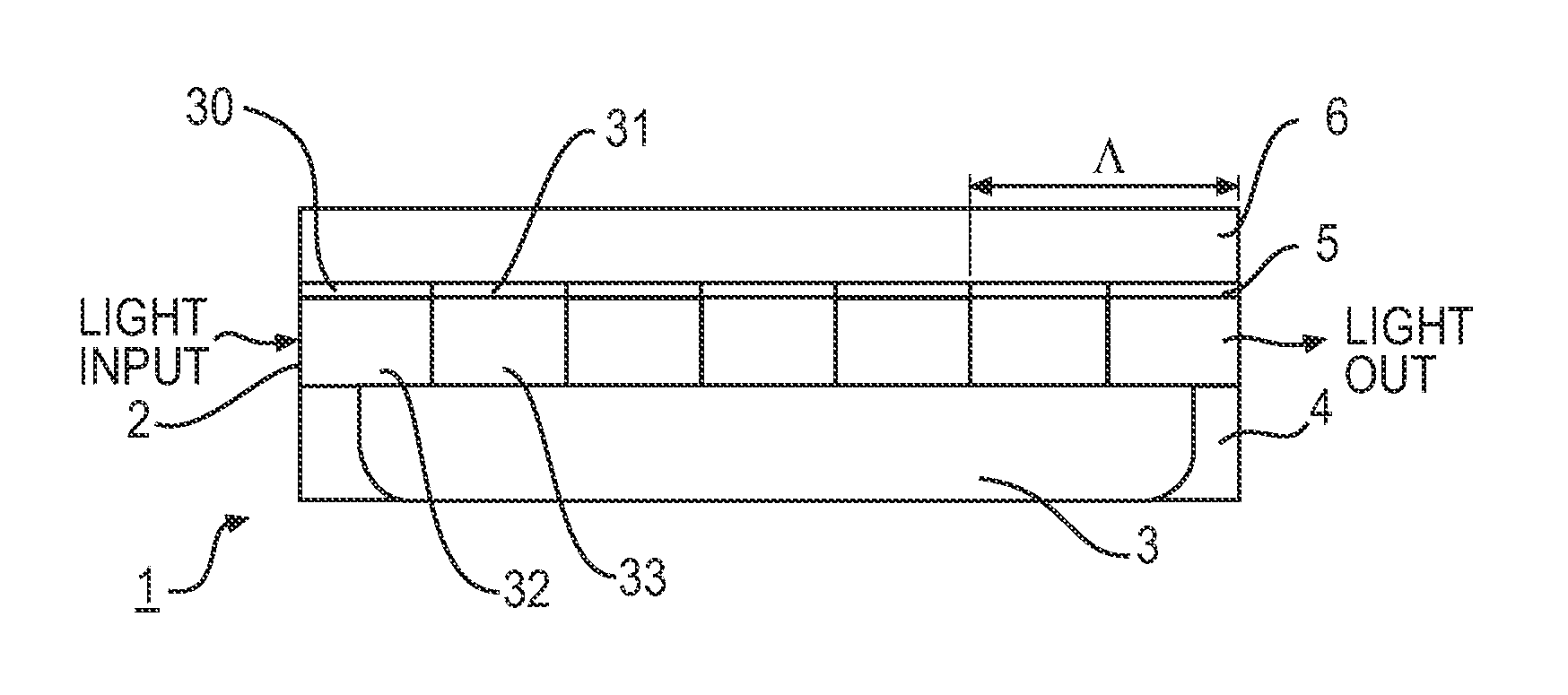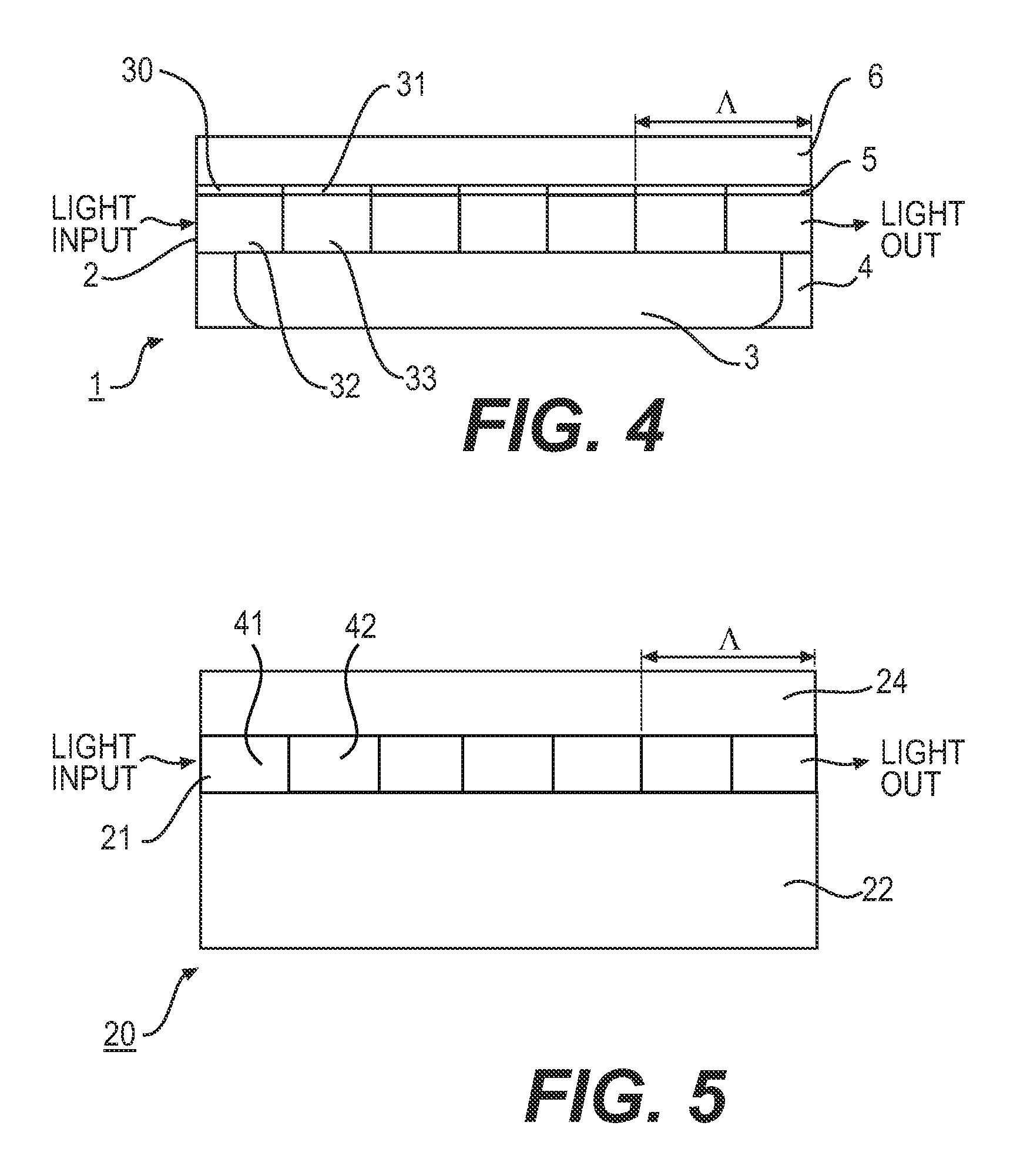Methods of producing strain in a semiconductor waveguide and related devices
a technology of semiconductor waveguides and strainers, applied in the direction of optical waveguide light guides, instruments, optics, etc., can solve the problems of only occurrence of shg effect, difficult integration and manufacture, and most materials are not optically transparent, so as to reduce or eliminate strain in sections, the effect of high strain
- Summary
- Abstract
- Description
- Claims
- Application Information
AI Technical Summary
Benefits of technology
Problems solved by technology
Method used
Image
Examples
Embodiment Construction
[0033]Throughout the following description and drawings, like reference numbers / characters refer to like elements. It should be understood that, although specific exemplary embodiments are discussed herein there is no intent to limit the scope of present invention to such embodiments. To the contrary, it should be understood that the exemplary embodiments discussed herein are for illustrative purposes, and that modified and alternative embodiments may be implemented without departing from the scope of the present invention.
[0034]It should be further noted that some exemplary embodiments may be described and claimed as a process or method (hereafter “method”). Though a method may be described and claimed as set of sequential steps, it should be understood that the steps may be performed in parallel, concurrently or simultaneously. In addition, the order of each step within a method may be re-arranged. A method may be terminated when completed, and may also include additional steps no...
PUM
 Login to View More
Login to View More Abstract
Description
Claims
Application Information
 Login to View More
Login to View More - R&D
- Intellectual Property
- Life Sciences
- Materials
- Tech Scout
- Unparalleled Data Quality
- Higher Quality Content
- 60% Fewer Hallucinations
Browse by: Latest US Patents, China's latest patents, Technical Efficacy Thesaurus, Application Domain, Technology Topic, Popular Technical Reports.
© 2025 PatSnap. All rights reserved.Legal|Privacy policy|Modern Slavery Act Transparency Statement|Sitemap|About US| Contact US: help@patsnap.com



